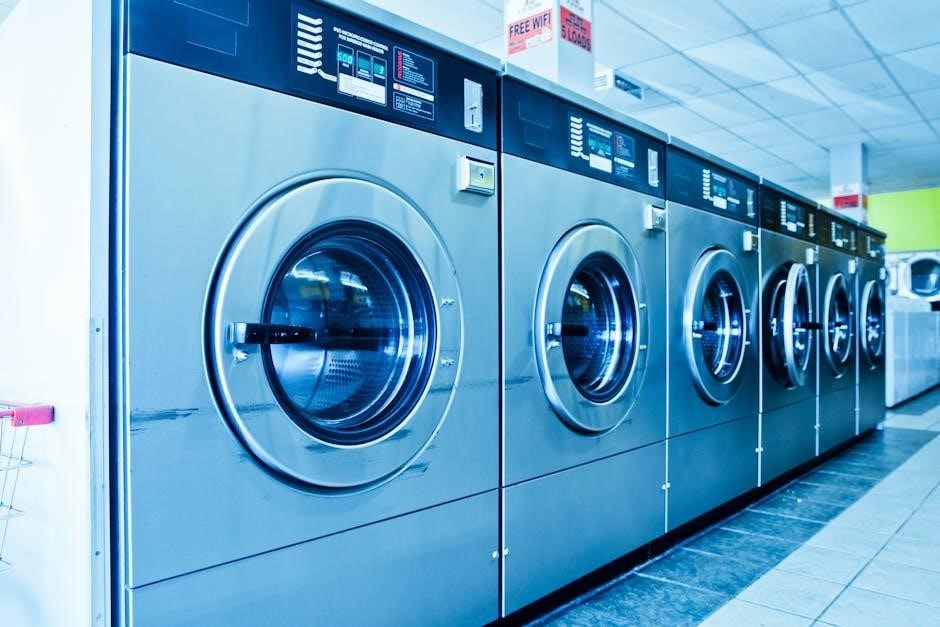Overview of Viking Oven Self-Cleaning Feature
The Viking oven’s self-cleaning feature uses high temperatures to burn food residue, leaving a powder ash for easy cleanup. This convenient process reduces manual scrubbing and maintenance time.
1.1 Benefits of the Pyrolytic Self-Cleaning Cycle
The pyrolytic cycle efficiently burns food residue at high temperatures, leaving ash for easy cleanup. It reduces manual scrubbing, avoids harsh chemicals, and minimizes maintenance time, making oven care safer and more convenient for users.
1.2 How the Self-Cleaning Process Works
The Viking oven’s self-cleaning process uses high heat to burn food residue, turning it into ash. The cycle lasts 2-4 hours, depending on soil level. The door locks securely, ensuring safety. After cooling, simply wipe away the ash for a clean oven interior, eliminating the need for abrasive cleaners or intense scrubbing.
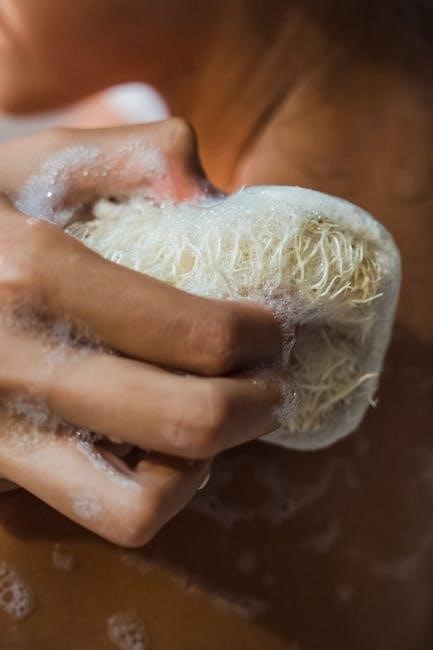
Preparing the Oven for Self-Cleaning
Before starting, remove racks, broiler pans, and utensils. Wipe up large food debris and protect exterior surfaces from heat. Ensure the area is well-ventilated for a safe process.
2.1 Removing Oven Racks, Broiler Pans, and Utensils
Remove all racks, broiler pans, and utensils before starting the self-cleaning cycle. This prevents damage from high heat and ensures efficient cleaning. Place items in soapy water for manual cleaning later. Avoid leaving any metal or plastic parts inside the oven during the cycle to prevent warping or melting.
2.2 Protecting the Exterior from Heat and Residue
Cover surrounding surfaces with heat-resistant covers or damp towels to protect from heat and residue. Use a mild soap and soft cloth to clean the exterior after the cycle. Avoid harsh chemicals that could damage finishes. Ensure all knobs and handles are wiped down to maintain their appearance and functionality.
2.3 Handling Large Food Debris Before Cleaning
Remove large food debris manually using a scraper or paper towels to prevent residue from melting and adhering during high heat. Clean oven racks separately and ensure the oven cavity is clear of bulky particles before starting the cycle for optimal results and reduced smoke.
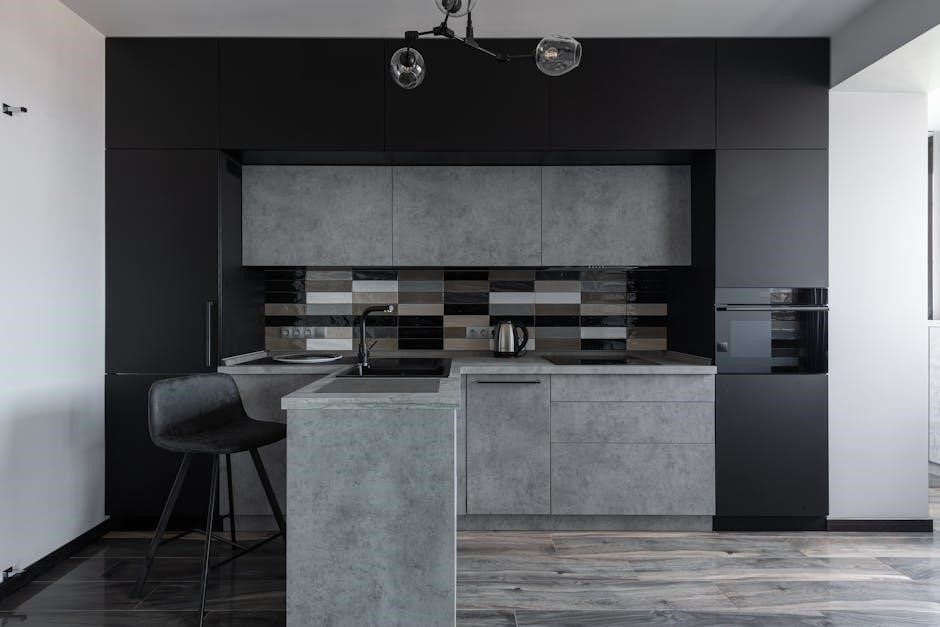
Step-by-Step Self-Cleaning Instructions
Close the oven door, select Self-Clean mode, and set the temperature and duration. Ensure the door is properly latched before starting the cycle for safe operation.
3;1 Selecting the Self-Clean Mode
Close the oven door, rotate the Oven Function selector knob clockwise to the Self-Clean mode, and ensure it clicks into place. The clean indicator light will illuminate, confirming selection. The door will automatically lock, and the cycle will begin once the temperature is set and confirmed.
3.2 Setting the Temperature and Duration
Turn the temperature control knob to the designated clean setting. The oven will automatically set the temperature and duration, typically between 2 to 4 hours, depending on soil level. Confirm the selection, and the cycle will begin, ensuring efficient burning of residue into ash for easy post-cleaning removal.
3.3 Ensuring the Door is Properly Latched
Close the oven door completely and ensure it is securely latched. The self-clean cycle will not start unless the door is properly locked. Once the cycle begins, the door will automatically lock and remain closed until the oven cools down. Verify the door seal is intact for a safe and effective cleaning process;

Post-Cleaning Maintenance
After the self-cleaning cycle, allow the oven to cool down completely. Wipe away ash residue with a damp cloth and clean exterior surfaces to maintain appearance.
4.1 Allowing the Oven to Cool Down
After the self-cleaning cycle, let the oven cool down completely to avoid burns and ensure safety. This step prevents damage to components and allows ash residue to solidify, making cleanup easier. Avoid opening the door until it has cooled to room temperature, as indicated by the oven controls or manual instructions.
4.2 Wiping Away Ash Residue
After the self-cleaning cycle, once the oven has cooled, use a damp cloth to wipe away the ash residue. Avoid using abrasive materials to prevent scratching. For thorough cleaning, a vacuum can help remove remaining ash. This step ensures the oven is clean and ready for future use.
4.4 Cleaning Exterior Surfaces
Use warm, soapy water and a soft cloth to clean the exterior, removing grease and fingerprints. Dry with a microfiber cloth to prevent streaks. Avoid harsh chemicals or abrasive materials that could damage the finish. Regular wiping maintains the oven’s appearance and prevents grime buildup, ensuring a polished look.
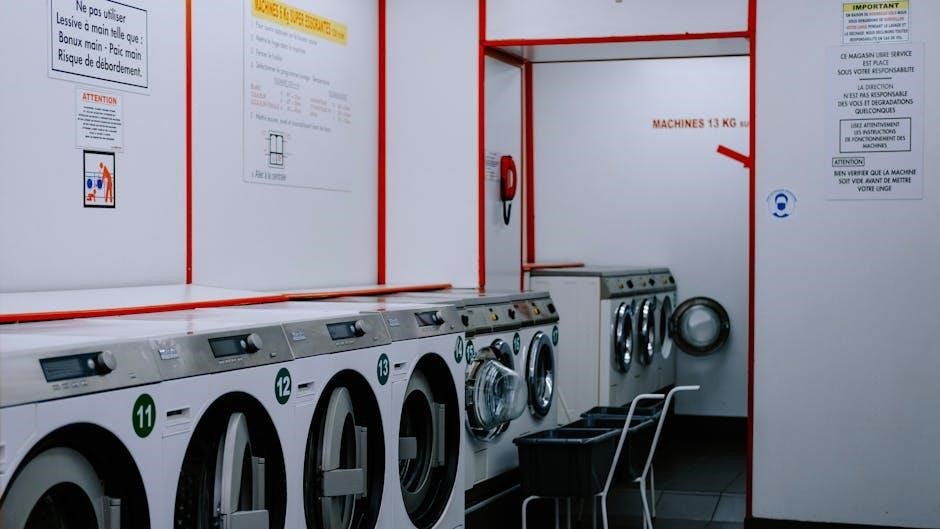
Troubleshooting Common Issues
Common issues include error codes, smoke, or the cycle not starting. Check the power supply, ensure correct settings, and refer to the manual for error code meanings. Excessive smoke may indicate improper preparation or debris buildup.
5.1 When the Self-Clean Cycle Won’t Start
If the self-clean cycle won’t start, ensure the oven door is fully closed and latched. Check the power supply and verify the correct settings are selected. If issues persist, consult the owner’s manual for error codes or contact Viking Support for assistance. Proper door alignment and control panel functionality are critical for cycle initiation.
5.2 Dealing with Error Codes
Error codes during the self-cleaning cycle indicate specific issues, such as faulty sensors or heating elements. Refer to the owner’s manual for code meanings. If unresolved, reset the oven or contact Viking Support for professional assistance. Addressing these codes promptly ensures optimal oven performance and prevents potential further complications.
5.3 Managing Excessive Smoke or Odors
Excessive smoke or odors during the self-cleaning cycle often result from large food debris. Ensure thorough removal of big residues beforehand. Keep the kitchen well-ventilated, and consider using an exhaust fan. If smoke persists, pause the cycle, let the oven cool slightly, then resume. This helps manage odors effectively.

Manual Cleaning Alternatives
For manual cleaning, use oven cleaners or a baking soda paste. Avoid abrasive materials and caustic chemicals. Clean racks separately and wipe surfaces gently to maintain finish;
6.1 Using Oven Cleaners Safely
Use recommended oven cleaners like Easy-Off Fume Free Max. Apply with a damp sponge, avoiding heating elements. Follow product instructions for timing. Wipe residues with a damp cloth, then dry. Avoid abrasive materials and caustic chemicals. Wear gloves and ensure good ventilation for safety during manual cleaning.
6.2 Cleaning Oven Racks and Grates
Remove racks and grates, then clean with soap and hot water. For stubborn spots, use a steel wool pad. Rinse thoroughly and dry to prevent rust. Lightly coat grates with cooking spray and blot dry for maintenance. Avoid abrasive cleaners to preserve finish and functionality of Viking oven components.
6.3 Avoiding Abrasive Materials
Avoid using abrasive cleaners, scrubbers, or harsh chemicals, as they can scratch or discolor the oven surfaces. Instead, opt for gentle cleaning products or a baking soda and water paste. For tougher stains, a soft-bristle brush or non-abrasive scrubber is recommended. Always test a small area first to ensure no damage occurs during cleaning.
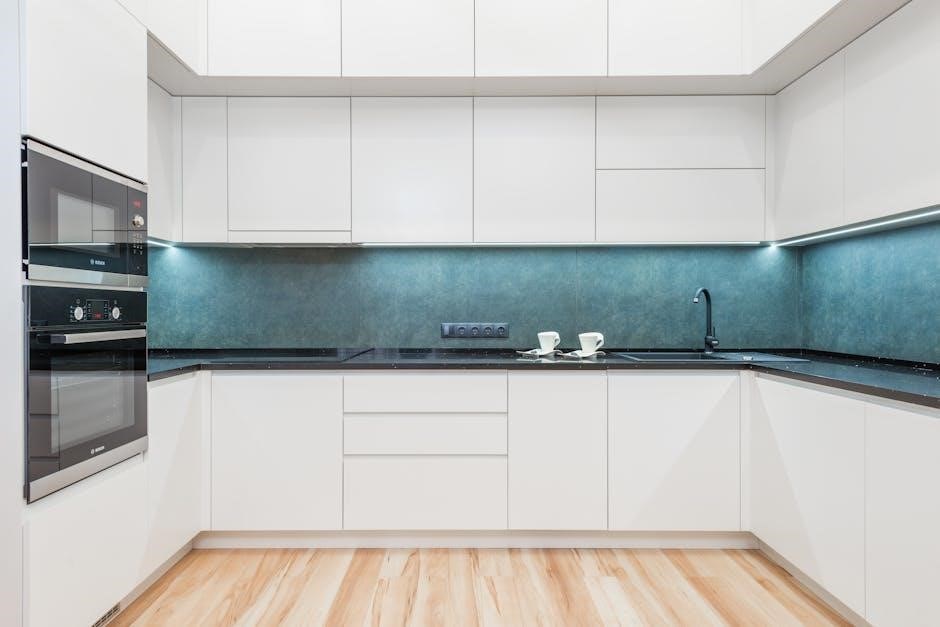
Safety Precautions
Avoid using abrasive cleaners, scrubbers, or harsh chemicals, as they can scratch or damage the oven’s interior. Instead, use gentle cleaning products or a baking soda paste. For tougher stains, a soft-bristle brush or non-abrasive scrubber is recommended. Always test a small area first to ensure no damage occurs during cleaning.
7.1 Avoiding Heat Damage to Surrounding Surfaces
During the self-cleaning cycle, the oven reaches extreme temperatures, which can damage nearby surfaces. Keep the area around the oven clear of flammable materials and cover adjacent surfaces with heat-resistant covers. Avoid touching the exterior, as it becomes extremely hot. Always follow the manufacturer’s guidelines to prevent heat-related damage and ensure a safe cleaning process.
7.2 Preventing Accidental Burns
Avoid touching the oven’s exterior during the self-cleaning cycle, as it becomes extremely hot. Keep children away from the oven while it is in use. Use oven mitts when handling racks or accessories after the cycle, as they may retain heat. Always allow the oven to cool down before cleaning to prevent burns.
7.3 Ventilation During the Cleaning Cycle
Ensure proper ventilation during the self-cleaning cycle to prevent smoke and odors from lingering. Open windows and use exhaust fans to circulate air. Some models feature smoke eliminators to reduce fumes. Avoid inhaling directly from the oven to maintain a safe and comfortable environment during the cleaning process.
Regular Maintenance Tips
Regular maintenance ensures optimal performance. Schedule cleanings to prevent grime buildup and inspect parts for wear. Store cleaning supplies safely to avoid accidents and contamination.
8.1 Scheduling Routine Cleanings
Regular cleanings are essential for maintaining your Viking oven’s performance. Schedule self-cleaning cycles monthly to prevent grime buildup. Consistency ensures the oven runs efficiently and reduces the need for deep cleans. Refer to your user manual for model-specific guidance to keep your appliance in optimal condition.
8.2 Checking for Wear and Tear
Regularly inspect your Viking oven for wear and tear. Check racks, grates, and gaskets for damage. Ensure all components are securely in place and replace any worn-out parts. This maintenance ensures optimal performance and safety. Refer to your user manual for specific guidance on identifying and addressing wear-related issues effectively.
8.3 Storing Cleaning Supplies Properly
Store cleaning supplies in a cool, dry place away from children. Use Viking-recommended cleaners to avoid damaging the oven. Ensure all products are tightly sealed and labeled. Keep abrasive materials separate to prevent accidental use on delicate surfaces. Proper storage maintains safety and ensures cleaning efficiency for your Viking oven.
The Viking oven’s self-cleaning feature offers convenience and efficiency, reducing manual effort. Always follow manufacturer guidelines to ensure optimal performance and longevity of your appliance.
9.1 Summary of Best Practices
Regularly use the self-clean feature, remove racks before cycles, and avoid abrasive cleaners. Ensure proper ventilation, handle ash safely, and maintain the exterior. Always follow the manufacturer’s guidelines for optimal results and appliance longevity.
9.2 Importance of Following Manufacturer Guidelines
Adhering to Viking’s guidelines ensures safe and effective cleaning, prevents damage, and maintains warranty validity. Misuse can lead to malfunctions or safety hazards. Always refer to the manual for specific instructions, especially for error codes, to guarantee optimal performance and longevity of your appliance.
